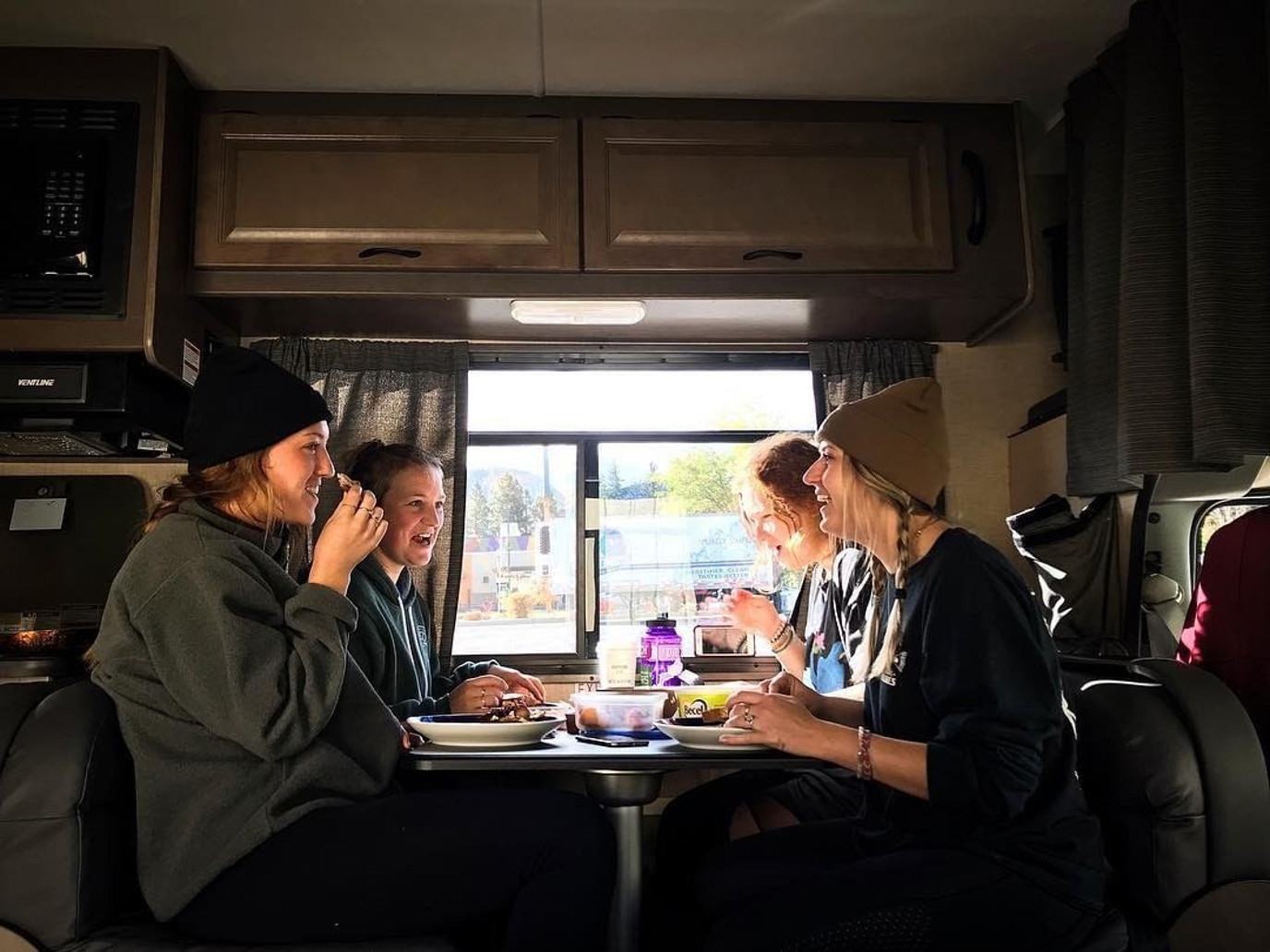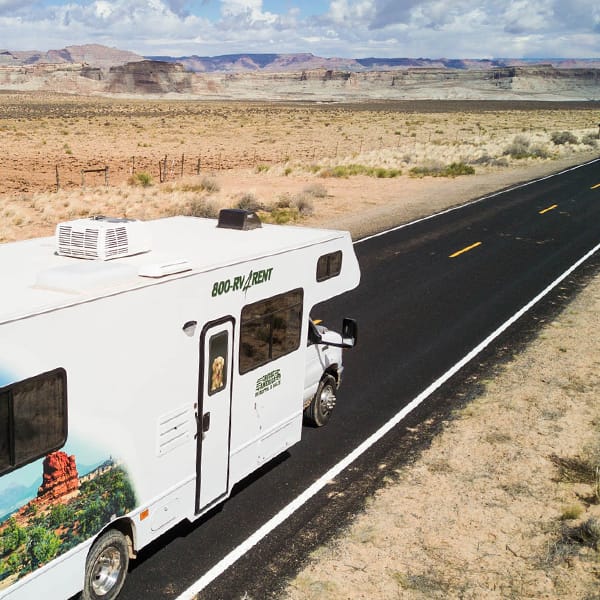RV Rules While Driving

If you ask us, there's nothing better than cruising toward your next adventure in an RV. It turns out RVers across the country agree. The RV Industry Association found that 90% of RV-owning households take at least three trips with their recreational vehicle or trailer annually.
That's why we created a guide explaining the dos and dont's of RV driving. Before get going, get answers to your questions, including:
- Can you walk around in an RV while driving?
- Can you use the bathroom in an RV while driving?
- Can you run your generator while driving an RV?
Can you use the bathroom while driving?
Bathroom breaks are a necessary part of any road trip, and luckily, having an RV makes it easy. The electrical systems work while the vehicle is on the road, allowing you to flush the water pump as usual. This rule applies to Class A, B, and C motorhomes.
However, some states require all passengers in an RV to remain seated the entire time the vehicle is in motion. If this is the case in the state you’re traveling in, you must pull over to use the onboard bathroom.
In states where moving in an RV is allowed, it’s still wise to stop the vehicle before using the RV bathroom.
Can you sleep while driving?
This question might seem pretty straightforward at first. After all, the driver of an RV shouldn’t be asleep while they are driving the vehicle. But what about the passengers?
Passenger safety is key when driving an RV. Following seat belt laws is important when taking a quick nap in a moving RV. If you can sleep while sitting in an RV passenger seat, you’re free to sleep. However, sleeping in an RV bed while someone is driving is not allowed.
Even if you live in a state where all passengers aren’t required to wear a seatbelt, it isn’t safe. If your RV comes to a quick stop, your sleeping passenger may fall out of bed.

Can you sit while driving?
The answer depends on the type of RV you are inside. Class A, Class B, and Class C motorhomes offer passengers the ability to sit in the back while the vehicle is in motion. This is because these types of motorhomes are equipped to withstand driving accidents.
Travel trailers and campers do not fit the criteria for safe passenger transport. They lack the required safety features, including seatbelts and the ability to protect passengers in the event of a car crash.
Depending on the state, you may be required to remain seated and buckled in for the duration of the ride.

Can you walk around while the RV is in motion?
Understandably, RV passengers will want to use their RV's amenities while someone else is driving. However, this is only sometimes possible. State seat belt laws will determine whether or not you can walk around in an RV while it's in motion.
Some states have stricter seat belt laws than others. For example, Georgia requires that all passengers wear a seat belt when a vehicle is in motion. Even if you are in a state where the seat belt laws are more relaxed, we recommend staying seated while the RV is in motion. You might become unbalanced if the RV makes a quick stop or shifts.
Can you run your generator while driving an RV?
The short answer to this question is yes. While some RVs don't come with a generator, some models do. Typically, your RV's generator provides 120-volt electrical power to RV amenities when outside power isn't available. This allows you to use your RV when an electrical hook-up isn't available.
It is important to note that your generator uses a gallon of fuel each hour is important. This fuel supply is shared with the engine of your RV. While using the generator isn't going to drain your fuel tank, it will shut off if it reaches ¼ tank capacity.
Can you use your air conditioner while driving?
Yes, if your generator is on while driving. Remember to keep your fuel tank's capacity in mind and turn off your AC before turning your generator off.
Can you run your refrigerator while driving?
The RV generator can supply power when your refrigerator is in AC mode. Remember that your generator uses the same fuel tank as your engine and to turn your electrical appliances off before turning your generator off.